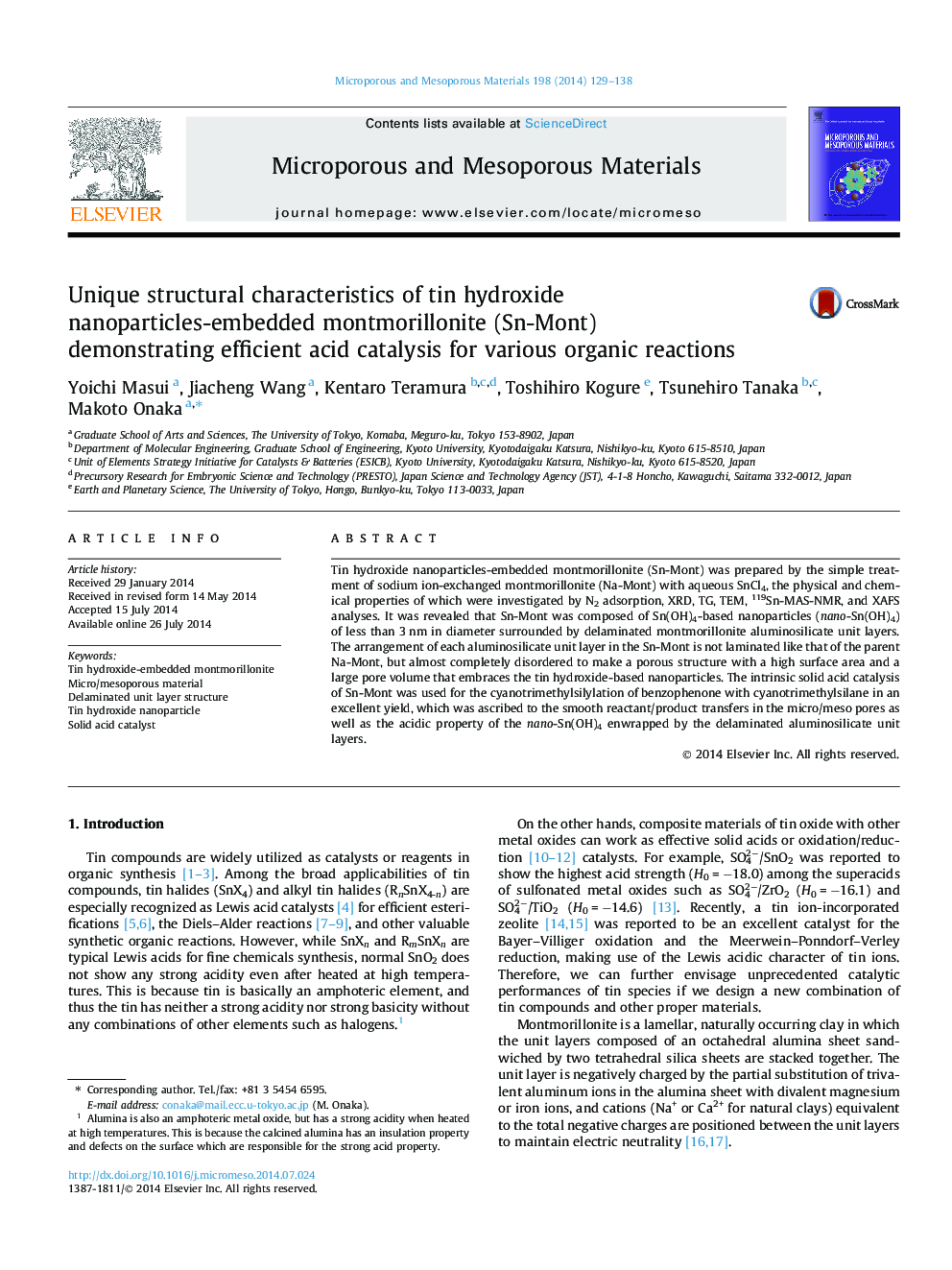| Article ID | Journal | Published Year | Pages | File Type |
|---|---|---|---|---|
| 72941 | Microporous and Mesoporous Materials | 2014 | 10 Pages |
•Sn-Mont has quite a different structure and nature from the other M-Monts.•Sn-Mont is composed of Sn(OH)4 nanoparticles and delamintated silicate layers.•Sn-Mont has much larger surface area and pore volume than the other M-Monts.•The unique porous structure of Sn-Mont is suitable for the mass transfer of reagents.•The unique structure of Sn-Mont is formed through the simple ion-exchange protocol.
Tin hydroxide nanoparticles-embedded montmorillonite (Sn-Mont) was prepared by the simple treatment of sodium ion-exchanged montmorillonite (Na-Mont) with aqueous SnCl4, the physical and chemical properties of which were investigated by N2 adsorption, XRD, TG, TEM, 119Sn-MAS-NMR, and XAFS analyses. It was revealed that Sn-Mont was composed of Sn(OH)4-based nanoparticles (nano-Sn(OH)4) of less than 3 nm in diameter surrounded by delaminated montmorillonite aluminosilicate unit layers. The arrangement of each aluminosilicate unit layer in the Sn-Mont is not laminated like that of the parent Na-Mont, but almost completely disordered to make a porous structure with a high surface area and a large pore volume that embraces the tin hydroxide-based nanoparticles. The intrinsic solid acid catalysis of Sn-Mont was used for the cyanotrimethylsilylation of benzophenone with cyanotrimethylsilane in an excellent yield, which was ascribed to the smooth reactant/product transfers in the micro/meso pores as well as the acidic property of the nano-Sn(OH)4 enwrapped by the delaminated aluminosilicate unit layers.
Graphical abstractFigure optionsDownload full-size imageDownload as PowerPoint slide
